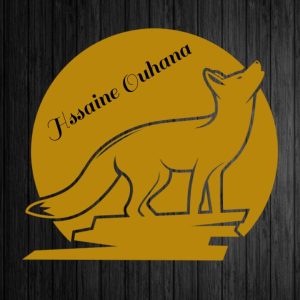Small-Group Royal Palace and Seoul City Tour with Lunch and Hotel
A full-day journey with a knowledgeable guide will allow you to see the attractions of Seoul.
Tour overview
Seoul City Tour, a full-day trip accompanied by an experienced guide will allow you to explore the top attractions of Seoul. Some of the highlights include visiting Jogyesa Temple, the Blue House, witnessing the royal guard changing ritual at Gwanghwamun Gate, and taking tours of Gyeongbokgung Palace and Changdeokgung Palace, both of which have been designated as UNESCO World Heritage sites. You can also immerse yourself in traditional Korean culture by visiting the National Folk Museum, Insadong Antique Street, and Namdaemun Gate and Market. The package includes lunch, admission fees, and hotel pickup for your convenience.
- A full-day tour of Seoul, including visits to Gyeongbokgung and Changdeokgung Palaces.
- Insadong Antique Street and Namdaemun Market feature traditional stores and items.
- Visit two royal palaces and learn about Korean dynasties.
- The package includes lunch, all admission fees, a tour, and hotel pickup.
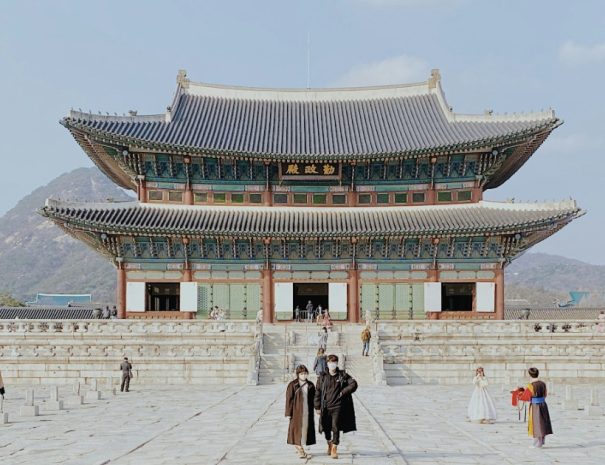
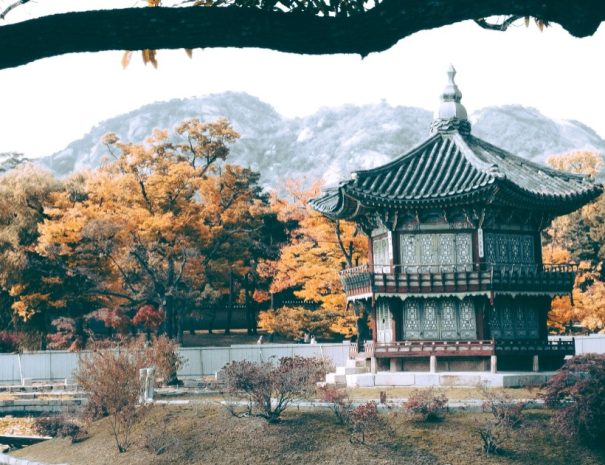
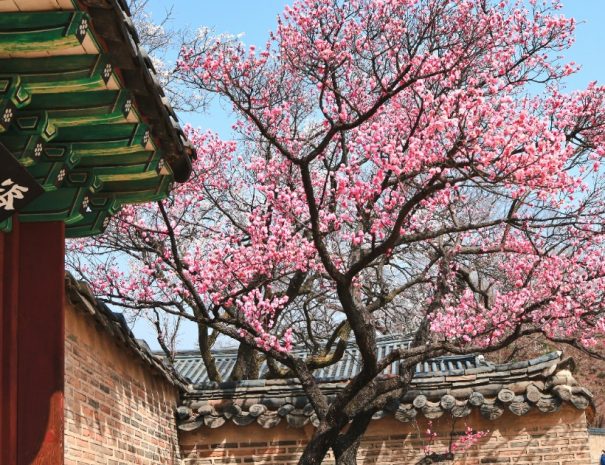
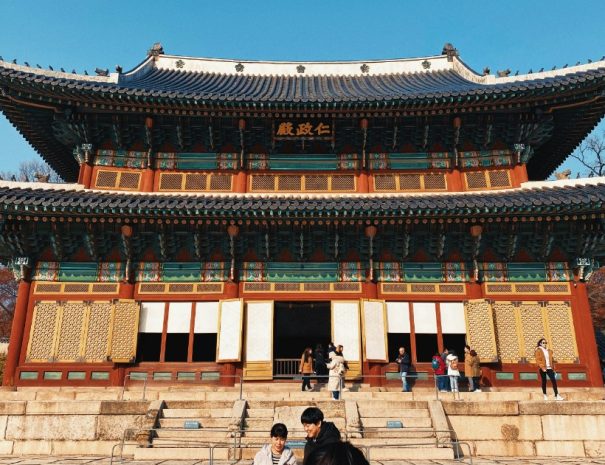
Tour itinerary
After morning pickup from your Seoul hotel, take a comfy car to Jogyesa Temple. Despite its position on a busy street in Jongno, the Zen Buddhist temple is quiet and gorgeous, with bright decorations and enormous golden Buddha sculptures. Continue to the Blue House (Cheong Wa Dae), which houses the President of the Republic of Korea. From the exterior, see the Blue House with Mt. Bukak in the distance. Arrive at Gwanghwamun Gate in time to witness the changing of the royal guards ritual. Then visit the northern palace, Gyeongbokgung, the Joseon dynasty’s primary palace.
Before dining on Korean cuisine, visit the Korean Ginseng Center. In the afternoon, visit the UNESCO World Heritage-listed Changdeokgung Palace and Insadong Antique Street. Insadong’s traditional culture may be experienced by visiting a Korean tea house or perusing antique shops. Namdaemun (also known as Soongryemun) is the tour’s final stop. It was erected in 1396 and is Korea’s most important national treasure. Make time to see the famous Namdaemun Market before your trip concludes.
Jogyesa Temple
Jogyesa Buddhist Temple is Korea’s Zen Buddhist center, and it is well-known for its location in the city. Jogyesa Temple may be found on the route leading to Anguk Subway Station from Jongno’s bustling streets. The beautiful trees are the first thing you’ll notice when you visit the temple. The locust and baeksong trees in front of Daeungjeon, the main temple edifice, are around 500 years old.
Gyeongbokgung Palace
After touring Jogyesa Temple, you will pass past the Presidential Blue House, which is distinguished by its distinctive blue tiles. The structure reflects Korea’s real beauty, with Mt Bukak peering behind it. Then you’ll travel on to Gwanghwamun to see the royal guard change ritual. It is a ceremony that announces the shifting of the royal guards and clarifies their identities. Then you will travel to Gyeongbokgung, which was a prominent palace and the most magnificent palace during the Joseon era. Please keep in mind that the Gyeongbokgung Palace and National Folklore Museum are closed on Tuesdays, so instead visit Deoksugung Palace and The Presidential Blue House Museum.
Insadong
Insadong is a traditional cultural center near Gyeongbok Palace. Insadong has been popular since the Joseon era for its abundance of antique shops. Today, Insadong is famous with visitors because it has many traditional tea houses, antique stores, traditional crafts shops, and other shops. Insa-dong is very popular among international tourists. This is where they may get a personal look at traditional Korean culture while also purchasing excellent paintings. On the street, many foreigners are engrossed in the happy festivities. Insadong represents traditional culture.
Changdeokgung Palace
Changdeokgung Palace was the second royal mansion erected after Gyeongbokgung Palace in 1405. It was the primary residence for many Joseon monarchs and is the best-preserved of the five existing royal Joseon palaces. It was designated a UNESCO World Cultural Heritage Site in 1997 due to its stunning aspect at the time. The palace grounds consist of a public palace area, a royal family dwelling structure, and a back garden.
Namdaemun Market
Soongryemun (Namdaemun) is the main gate of the ancient Seoul fortification from the Joseon era. It is usually referred to as Namdaemun. The gate was completed in 1396, during King Taejo’s reign. King Sejong rebuilt it in 1447, followed by King Seongjong in 1479. In 2006, Seoul opened the entrance to the gate to the public. The gate has recently been designated as Korea’s national treasure #1. However, on February 10th, 2008, an arsonist destroyed the gate, as well as the wooden gate. The Cultural Heritage Administration has revealed plans to reconstruct the gate in a manner comparable to its historical look. The reconstruction was completed early in 2013.
Includes:
- Hotel pickup in central Seoul.
- Local guide.
- Lunch.
- Driver/Guide.
- Bottled water.
Excludes:
- Gratuities.
- Hotel drop-off (at City Hall or Myeongdong).
Testimonials
The changing of the guard at the Palace included beautiful centuries-old costumes, as well as melancholy horn and drum music.
Fragale
Tina
If you are hesitant, don’t! I would highly suggest this trip. Lunch was fantastic, and the tour guide was really friendly and helpful. I learned a lot about Korea.
Silver
Molly
Tour highlights
- To receive a full refund, you must cancel at least 24 hours before the experience's start time.
- If you cancel less than 24 hours before the experience's start time, you will not receive a refund.
- Any modifications made less than 24 hours before the experience's start time will be rejected.
- The cut-off times are depending on the experience's local time.
Important details
Point of convergence:
Pickup details: Most central Seoul hotels and metro stations provide pick-up services. Please supply us with the entire name and address of your Seoul accommodation. Then we will let you know where and when you may meet us. Most central Seoul hotels and metro stations provide pick-up services. Please supply us with the entire name and address of your Seoul accommodation. Then we will let you know where and when you may meet us.
Before you go, be aware of the following:
- You will get a confirmation at the time of booking.
- Not wheelchair accessible.
- The stroller is accessible
- Near public transit.
- Infants must sit on laps.
- Not suggested for travelers with back problems.
- Pregnant tourists should avoid this activity.
- There are no heart issues or any other major medical disorders.
- You will get a confirmation at the time of booking.
- The stroller is accessible. Not wheelchair accessible. Travelers should be in moderate physical condition.
- Vegetarian options are available; please specify at the time of booking if requested.
- The Royal Guard changing ceremony may be canceled owing to inclement weather.
- On Mondays, Changdeokgung Palace is closed, therefore you will visit Bukchon's historic Hanok Village.
- This excursion will run with a minimum of two individuals.
- On Tuesdays, Gyeongbokgung Palace is closed, so instead you will visit Changdeokgung Palace and Changdeokgung Palace Rear Garden (Secret Garden) in the morning and the Korean Folk Museum, Ginseng Museum, and Namdaemun in the afternoon.
- This tour/activity will have a maximum of 15 participants.
